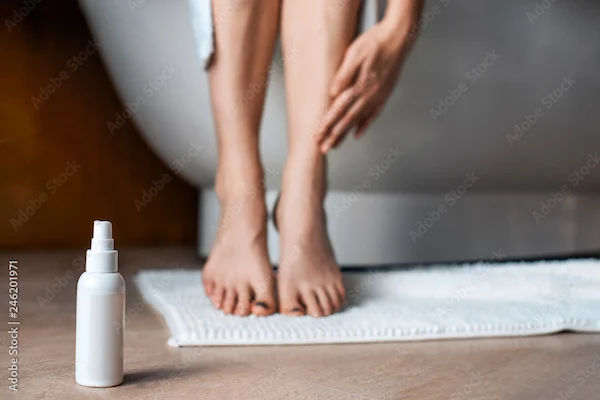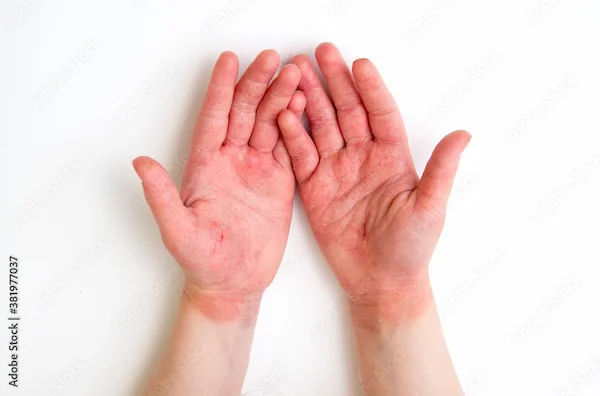How To Reduce Puffy Face?
Learn effective ways to reduce a puffy face, from lifestyle changes to skincare routines and dietary tips. Discover how to address puffiness for a more refreshed and toned appearance.

Written by
Last updated on 3rd Jul, 2025
Facial puffiness is a common issue that is mostly caused by fluid retention, food and beverage choices, lifestyle habits, and certain underlying health conditions. This may be temporary or persistent and can affect the overall appearance. Getting to the root of the causes is essential to finding effective solutions. This guide will discuss what causes facial swelling, lifestyle adjustments, skincare routines, home remedies, and medical treatments that will help reduce or avoid facial puffiness and make an individual look and feel healthier and better.
Lifestyle Changes to Reduce Puffiness
Some small lifestyle changes can diminish facial puffiness and promote a healthier look. Here are some significant lifestyle changes for reducing facial puffiness:
Maintain Proper Hydration
Water helps to flush out excess sodium and toxins, eliminating fluid retention. Both herbal teas and infused water can be used to reduce inflammation.
Improve Sleep Quality and Posture
Individuals need to be consistent with their sleep. They need to sleep for at least 8 hours every night in a good posture. They must sleep on their back and elevate the head with an extra pillow to prevent the accumulation of fluids on the face.
Limit Alcohol and Caffeine Consumption
Excessive alcohol and caffeine intake cause dehydration and inflammation. One can opt for hydrating alternatives such as coconut water to maintain a fresh appearance.
Engage in Regular Physical Activity
Regular exercise improves circulation, decreases fluid retention, and helps with lymphatic drainage. Activities like yoga and facial massages are very useful for reducing puffy faces.
Dietary Adjustments
Good dietary choices help keep the balance of fluids, reduce inflammation, and minimise facial puffiness. The following dietary adjustments are crucial for lowering facial puffiness:
Lowering Salt Intake
The facial swelling results from excess sodium, which causes water retention. To reduce salt intake:
Make sure to avoid processed and packaged foods with high amounts of hidden salts.
Use fresh ingredients and natural seasoning.
Instead of salt, use herbs, spices and citrus for flavour.
Flush out sodium by staying hydrated.
Foods to Include in Diet
Eating a nutrient-rich diet will help with skin health and remove puffiness:
Eat potassium-rich foods like bananas, avocados, and spinach to balance sodium levels.
Cucumbers, watermelon, and celery are hydrating foods that help in fluid drainage.
Anti-inflammatory foods like berries, leafy greens, and nuts reduce swelling.
Salmon, flaxseeds and walnuts are omega-3 supplements for skin health.
Home Remedies
When dealing with a puffy face, natural remedies can provide quick and effective relief. Simple home treatments can help reduce swelling, improve circulation, and restore a refreshed look. Here are some easy solutions:
Cold compression constricts blood vessels and lowers swelling
Wrap ice cubes in a cloth and apply for a few minutes
Refrigerate metal spoons and press them on puffy areas
Use cold green tea bags. Soak tea bags and place them over the eyes for a de-puffed look
Facial Massage and Lymphatic Drainage
A gentle massage improves the circulation and drainage of the fluid:
Use upward motions with fingertips or a jade roller
The anti-inflammatory properties of aloe vera gel can be useful.
Use lymphatic drainage massage at the jawline, cheeks, and temples.
Natural Ingredients to Reduce Puffiness
Some household ingredients can tighten skin and help soothe inflammation at the same time. They are:
Hydrate and cool the skin using cucumber slices
Potato slices contain enzymes that help reduce swelling
An egg-white mask makes the skin tight and minimises puffiness
Herbal Teas and Detox Drinks
Herbal teas and detox drinks are believed to help reduce puffiness. Some of the most common ones are:
Green tea fights inflammation with antioxidants
Dandelion tea flushes out excess fluid
Lemon water aids in digestion and detoxification
Skincare Routine
Facial puffiness is minimised by an effective skincare routine that influences, hydrates, and addresses fluid retention. Below are the effective skincare products and methods for reducing puffiness:
Moisturisers and Serums
Hydration helps skin maintain elasticity and keeps the skin from puffing up:
Use moisturisers that are water-based or gel-based to prevent the retaining of fluid.
Hyaluronic acid, caffeine, and antioxidants should be the basis of choosing serums — to mitigate swelling and to make the skin more radiant.
Keep applying products with an upward massaging motion to promote lymphatic drainage.
Facial Rollers and Massagers
Here are some facial tools that help to improve circulation and de-puff the skin:
Rose and jade quartz rollers cool and promote lymphatic drainage.
The Gua Sha tools shape the face and improve circulation.
Refrigerated rollers give a quick de-puffing effect.
Cooling and Soothing Treatments
Specific cold treatments will help constrict the blood vessels and decrease swelling:
For calming inflammation, use ice therapy and cold compresses
Soaked and refrigerated sheet masks hydrate and renew skin
The cucumber or aloe vera gel gives a natural cooling effect and brings back the natural glow of the skin
Night-time Skincare Routine
Fluid retention overnight is prevented by a consistent regimen:
Apply anti-inflammatory night cream with peptides and chamomile
Use an elevated pillow during sleep to diminish puffiness in the morning
Use a gel infused with caffeine under the eye before bed
Sunscreen Protection
Sun exposure can worsen puffiness and promote inflammation. To prevent this:
Apply broad-spectrum SPF30 + sunscreen
Opt for a lightweight and fast-absorbing formula to prevent oil build-up
Apply sunscreen from time to time for continuous protection all-day
Medical Treatments
Medical treatment is available for persistent facial puffiness that doesn’t improve with lifestyle changes. They are:
Topical Treatments
Swelling is reduced by prescription and over-the-counter creams:
Retinol and peptides help to tighten the skin.
Caffeine and niacinamide reduce inflammation and fluid retention.
Eye creams that are recommended by dermatologists reduce under-eye puffiness.
In-Office Procedures
Professional treatments for long-term results include:
Lymphatic drainage therapy enhances circulation and aids the drainage of fluid.
Treatments with laser and radiofrequency tighten skin and boost collagen.
Dermal fillers help in correcting puffiness due to the displacement of fat.
Controlled cooling is the method used in cryotherapy to decrease swelling.
Surgical Options for Chronic Puffiness
Severe cases can require surgical procedures like:
Through blepharoplasty (eyelid surgery), the extra fat and skin are removed.
Facial liposuction removes fat in the areas leading to swelling.
The sagging skin is tightened by a lower facelift, removing the puffiness.
Recognising When to Seek Medical Advice
Although occasional puffiness on the face is normal, persistent or excessive swelling may be a sign of an underlying health condition. Detecting the warning signs helps in the proper diagnosis and treatment:
Persistent Puffiness
Medical attention is needed if:
Lifestyle changes do not change puffiness
Puffiness lasts for weeks, or it is recurrent
The swelling gets worse without reason over time
Accompanying Symptoms
If the puffiness is accompanied by:
Pain, redness, and warmth may mean an infection.
Difficulty breathing, hives, or rash indicate an allergic reaction.
Vision changes, headaches, or neurological symptoms indicate immediate care is needed.
Underlying Health Conditions
The health conditions that may be associated with facial swelling are:
Kidney or liver disorders
Thyroid imbalances
Sinus infections
Prevention Tips
To prevent facial puffiness, adopt healthy habits and avoid the common triggers. There are small lifestyle changes which can help one maintain a refreshed and youthful appearance:
Daily Habits to Adopt
Drink enough water. This will prevent the accumulation of fluid.
A balanced diet contains nutrient-rich foods that are good for the skin.
Focus on quality sleep and keeping the head slightly raised to prevent puffiness.
Exercise helps circulation and reduces swelling.
Lymphatic drainage techniques are good for minimising fluid accumulation.
Avoiding Known Triggers
Cut down salt intake as sodium increases the body’s water retention.
Stay away from alcohol as it causes dehydration and swelling.
Avoiding allergen exposure stops inflammation from occurring.
Reduce stress as stress-related hormonal imbalances can also lead to puffiness.
Extreme temperatures can make swelling worse and damage the skin.
Conclusion
To reduce facial puffiness, it is necessary to tweak the lifestyle, dietary habits, and skincare. Maintaining a consistent sleep schedule, replacing salty food, avoiding large intake of alcoholic beverages, and applying facial massages can reduce puffiness of the face to a greater extent. But, for long-term results, a structured and consistent routine is paramount. For persistent swelling, it is recommended that medical advice be sought if the cause of it is unknown.
Consult Top Dermatologist
Consult Top Dermatologist
Dr. Kavitha Killaparthy
Dermatologist
23 Years • MBBS,DIPLOMA(DERMATOLOGY,VENEREOLOGY,LEPROSY)
Hyderabad
JDS Skin & Hair Clinic, Hyderabad
Dr. Mayuri Jain
Dermatologist
11 Years • MBBS, MD Dermatology , Venereology & Leprosy
Delhi
Dr Mayuri Jain Clinic, Delhi

Dr Ekansh Shekhar
Dermatologist
10 Years • MBBS MD
Lucknow
Apollo Clinic Hazratganj, Lucknow
Dr.j Girishma
Dermatologist
6 Years • MBBS MD DERMATOLOGY
Bengaluru
Apollo Medical Center, Marathahalli, Bengaluru

Dr. Satarupa Mondal
Dermatologist
7 Years • MBBS , MD (Dermatology , Venereology & leprosy) , Diplomate (Derm.Vene.Lep)
Kolkata
Dr Satarupa Mondal, Kolkata


